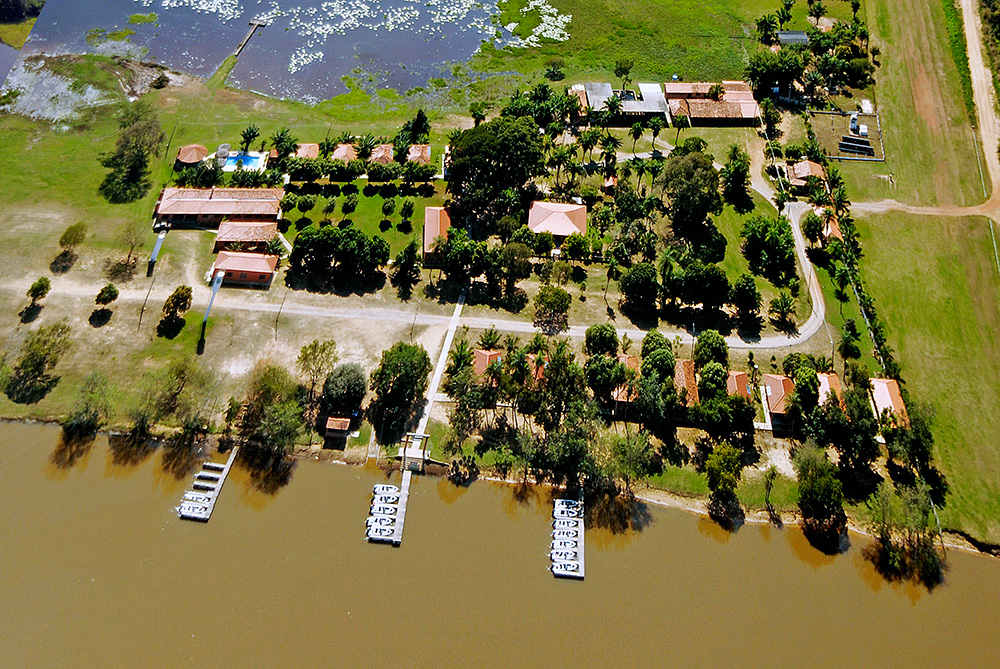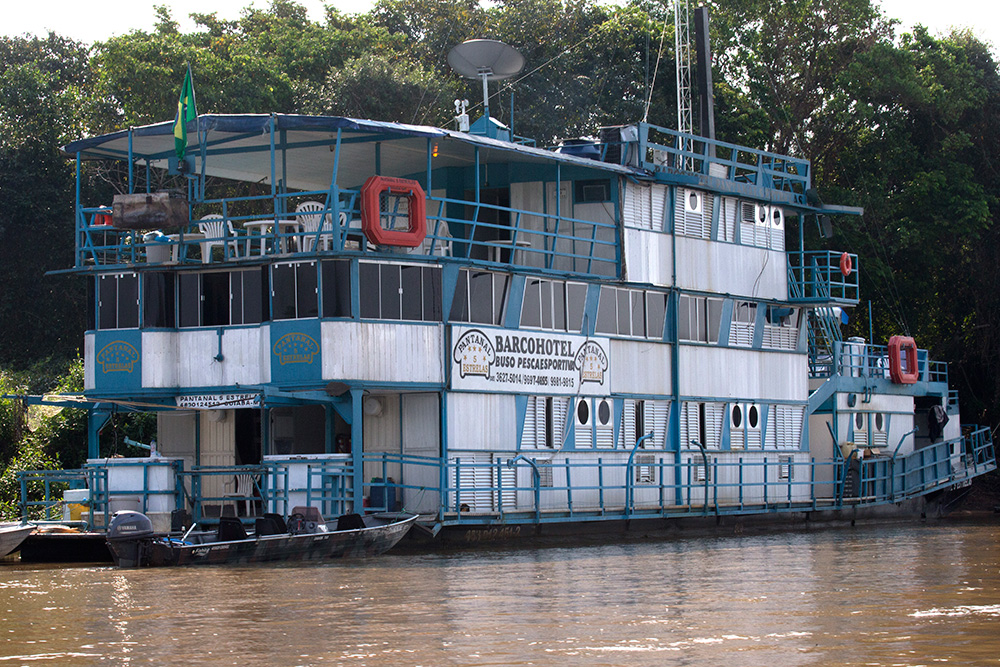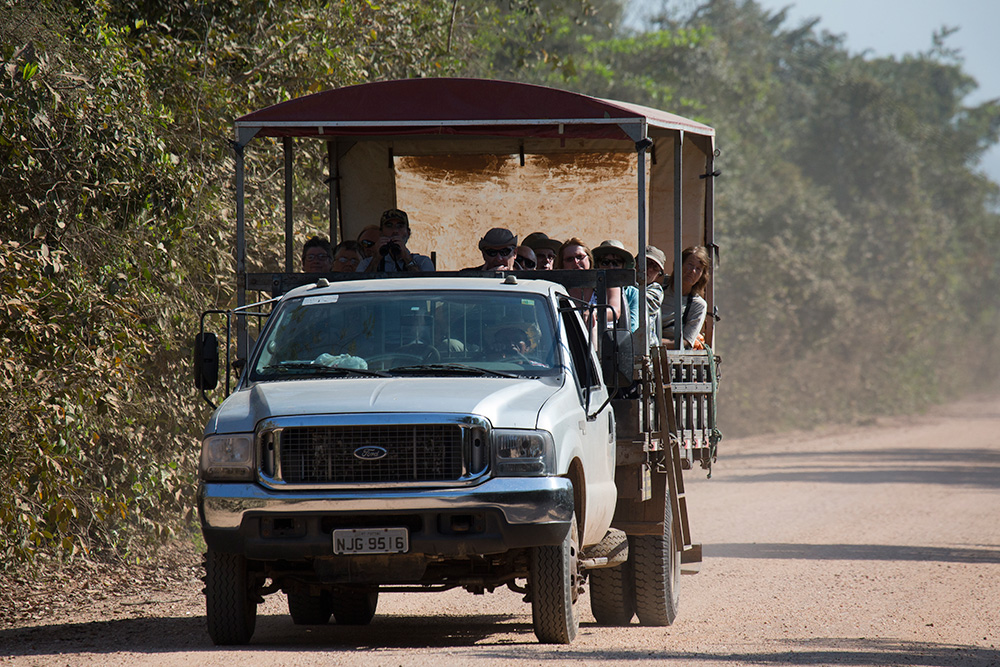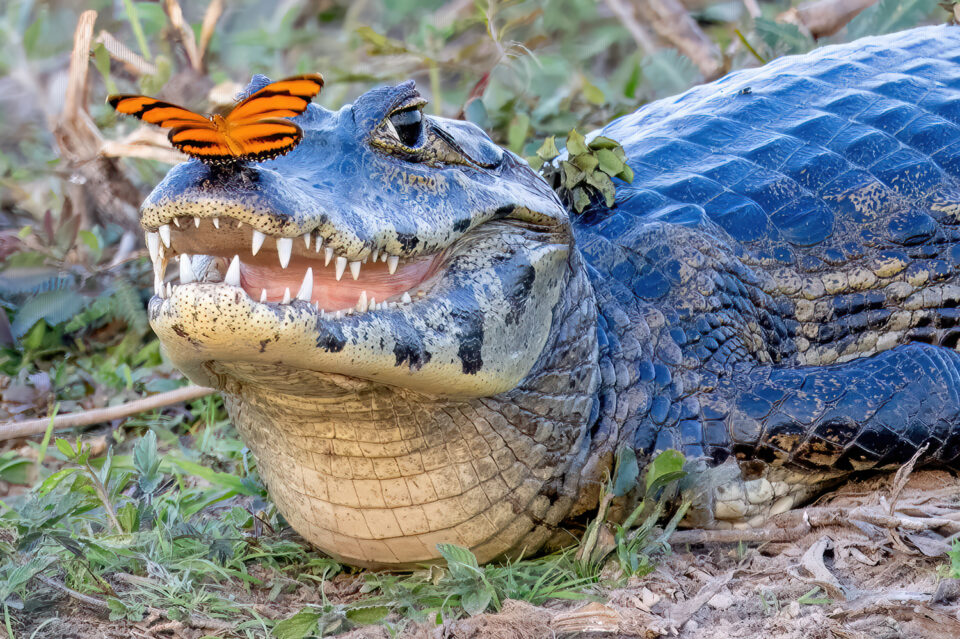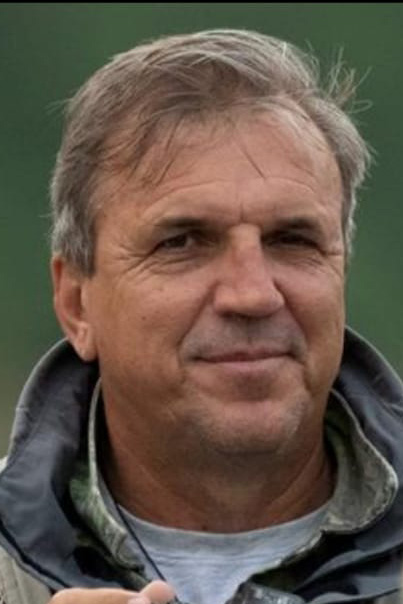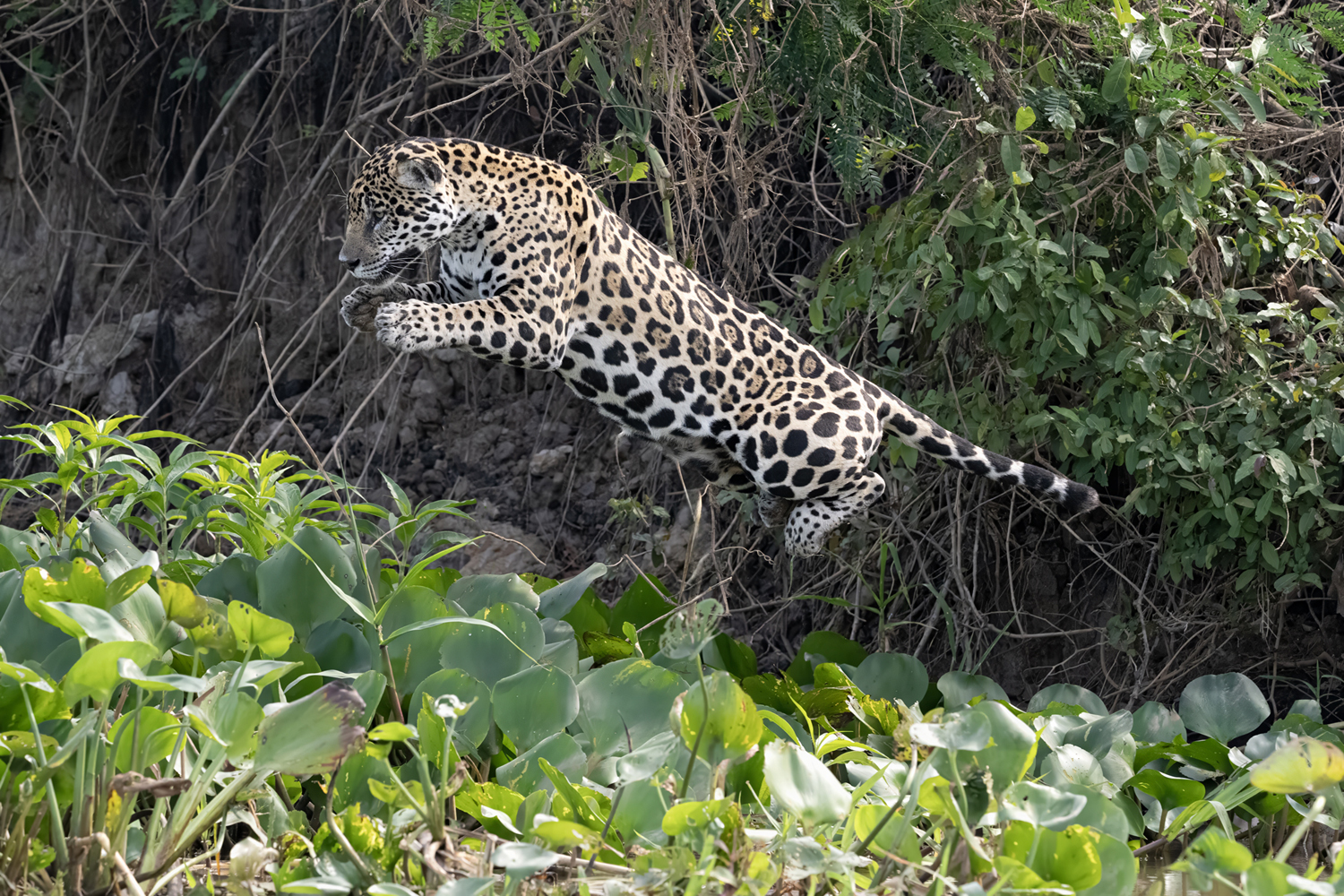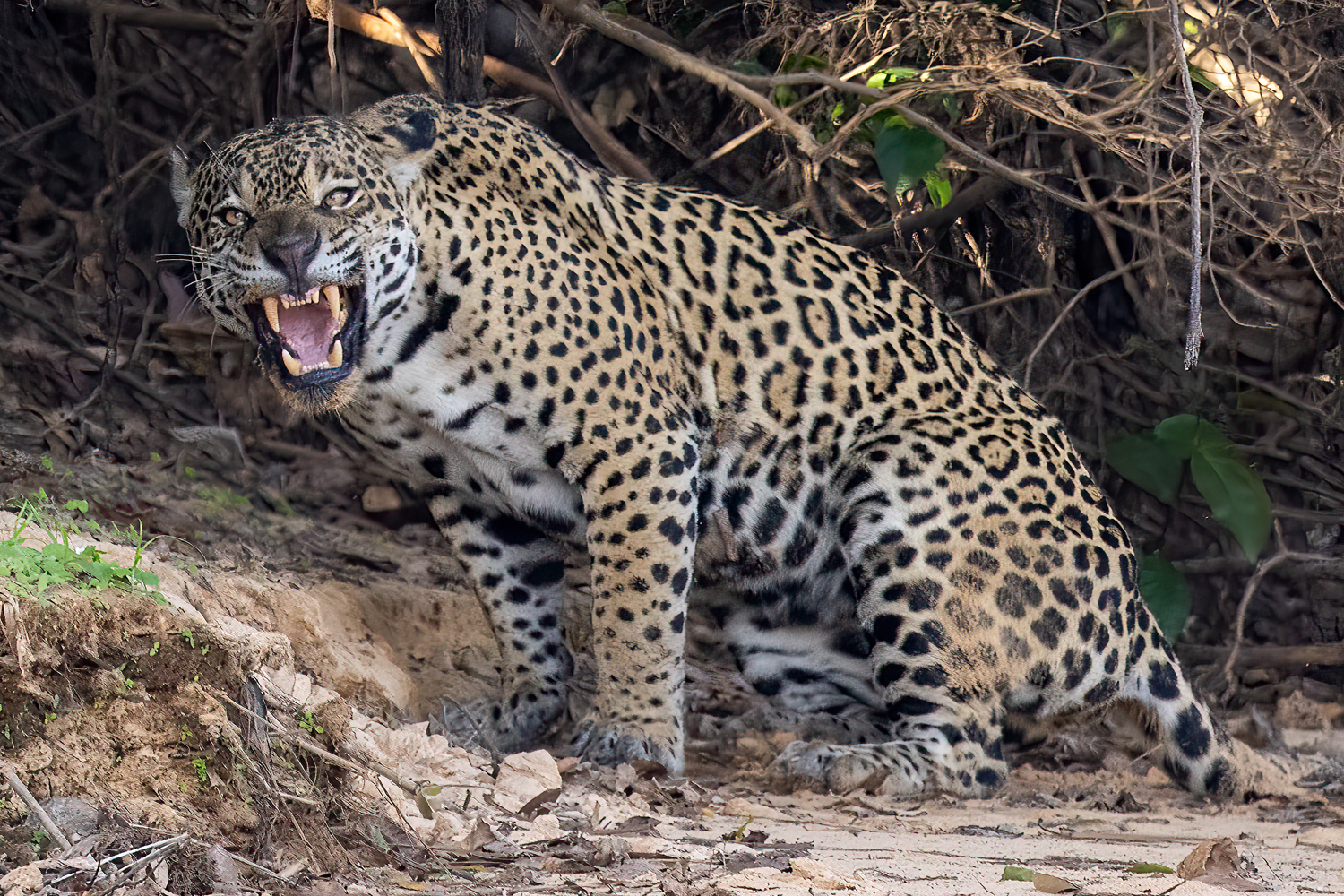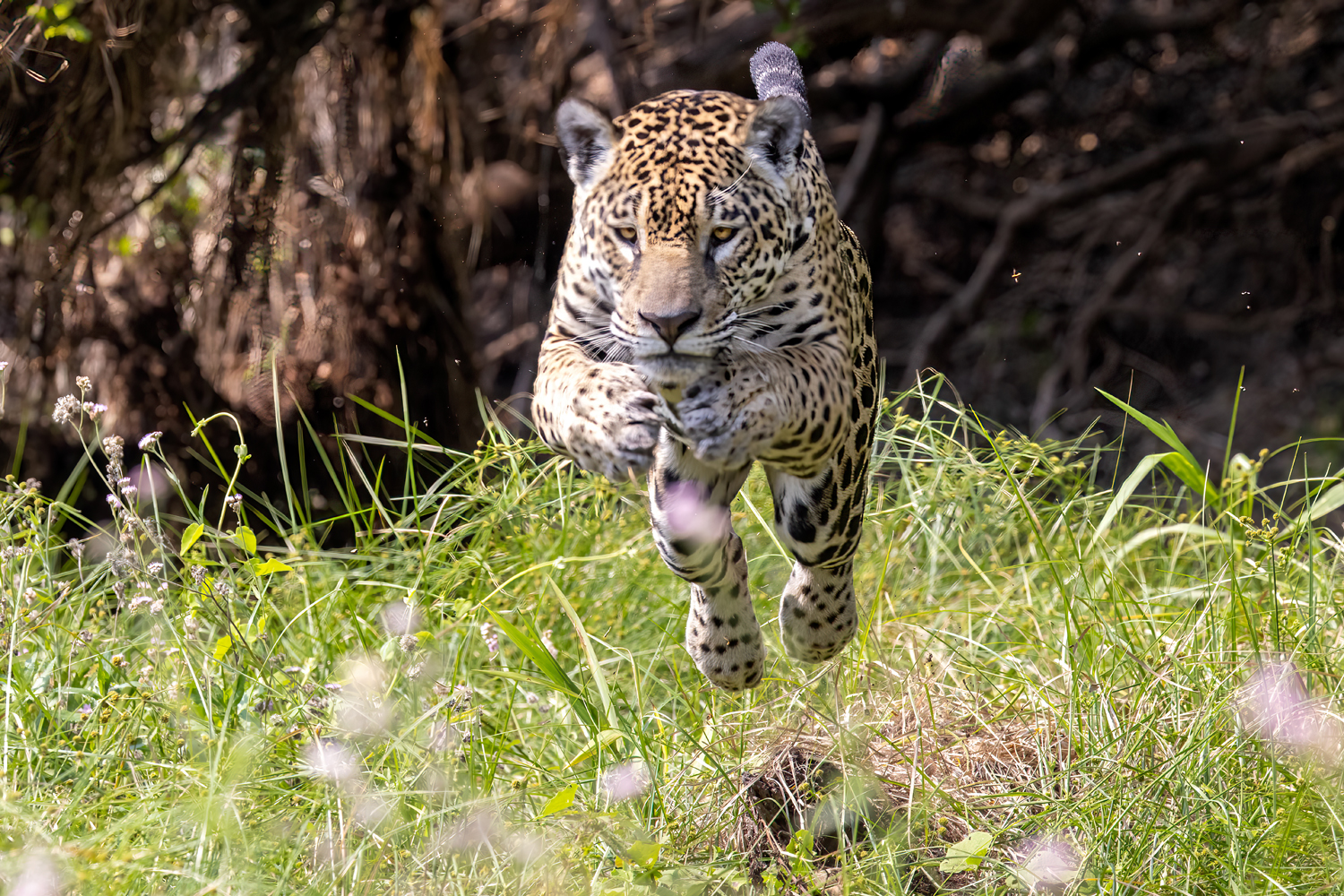The Brazilian lowlands known as the Pantanal form an enormous wilderness in the heart of South America. This flat rain-fed region, laced with waterways and submerged beneath silvery sheets of floodwater for half the year, is one of the most photographically productive wildlife habitats on the entire continent.
Few places offer so many animals of such variety, so spectacularly visible, as the Pantanal. One reason for the incredible exuberance of animal life is the sparse human settlement of the region. Because of the damp land and annual flooding, large-scale cultivation is impractical and access remains difficult—except by boat. Giant cattle ranches lay claim to the land, but they are stocked at low density, and ranching has done little to change the essential character of the landscape. These days, more and more of these fazendas are being converted into ecolodges.
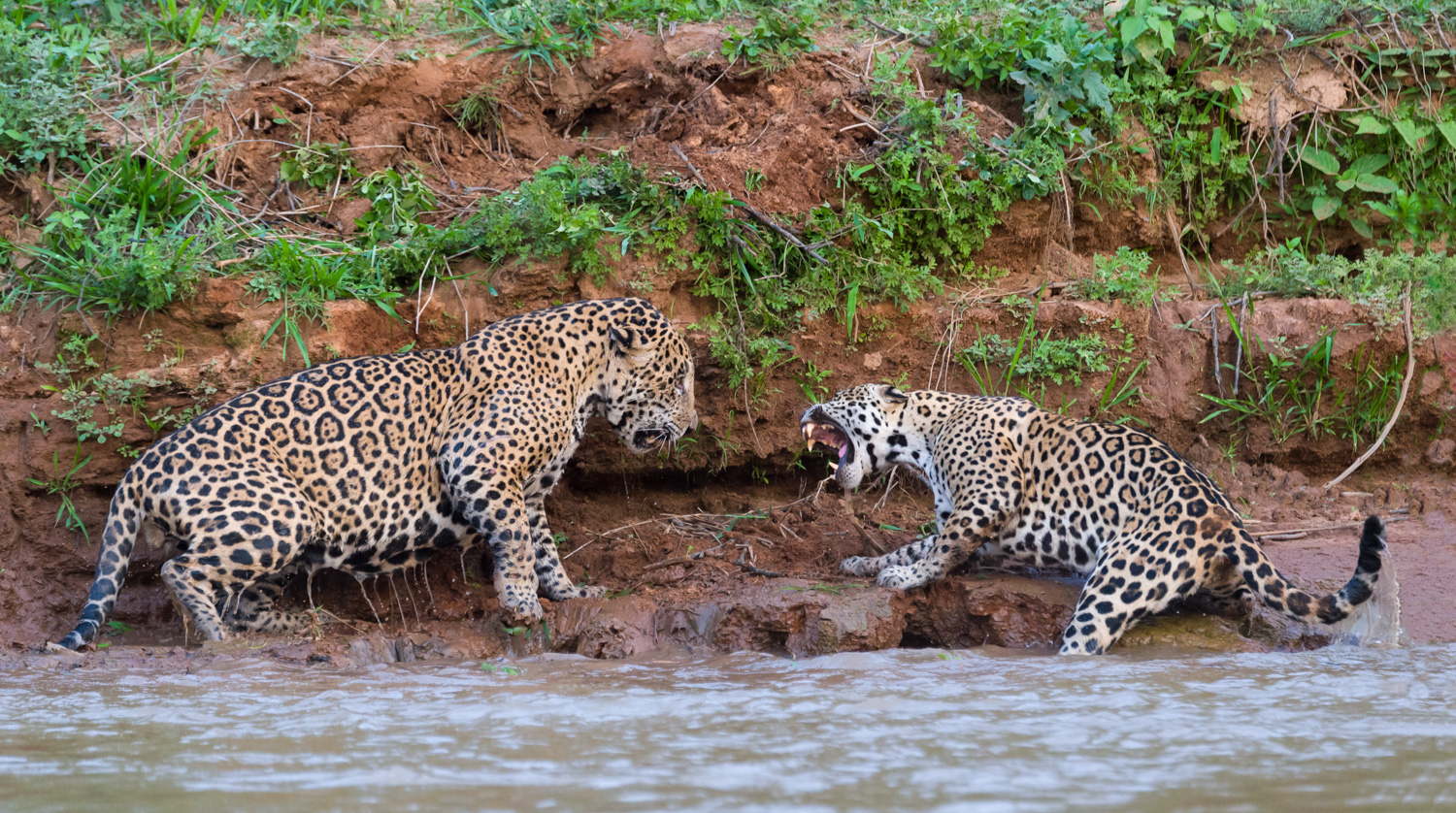
Jaguars, the third largest “big cat” on earth dwells deep within the Pantanal’s tangled floodplain forests. Here, they have remained one of the planet’s most photographically elusive large predators—until now! Along several Pantanal rivers, jaguars have become habituated to the growing activity of commercial and sport fishing boats over the past few years. Because of their growing familiarity with this increasing river traffic, jaguars have learned to relax on the banks in the shade of riverside trees. From exposed vantage points and camouflaged lairs, they monitor these rivers and wait for prey along their sandy banks. Being enthusiastic swimmers, they often cool down with a refreshing dip as the day heats up. The amazing Pantanal jaguars are the world’s largest jaguar subspecies and big, photogenic males can weigh over 300 pounds. It is not unlikely to see these largest American cats stalk capybaras and caiman during the coolest hours of the day.

On this Pantanal photo tour we shoot a fantastic variety of wildlife while exploring the Transpantaneira Highway by air-conditioned mini bus and by cruising numerous waterways in small boats. By building the “highway” through the wetland, the mounding of soil for the roadbed has created the adjacent “borrow pit” as a by-product that extends for countless miles. Here, our cameras capture jabiru, the world’s largest stork—an iconic symbol of the Pantanal. Families of capybaras are often seen wallowing and feeding right alongside the voracious caiman. Capybaras resemble giant guinea pigs—this conspicuous rodent attains weights exceeding 130 pounds! Noisy groups of endangered giant otters patrol these same waterways and we should have good opportunities to photograph them at close range.

The abundance and diversity of large mammals can be seen on all sides, yet many of the region’s big mammals have not been photographed extensively. Marsh deer, coatimundi, giant anteaters, tapirs and giant river otters are all potential targets for our lenses. And now—during the dry season in the Pantanal—rarely-seen jaguars are a welcome addition to the Pantanal’s photographic repertoire!
Along with breathtaking jaguars, the Pantanal’s other truly great spectacle is provided by the amazing variety of water birds that utilize these wetlands to probe, sift and stab for prey. They include huge numbers of egrets, herons, ibis and wood storks, as well as spoonbills and jabiru. Bird photography is exceptional here, reminiscent of Florida’s Everglades in the 1800s before its degradation. Other interesting species to photograph at close range, such as toco toucans, hyacinth macaws, snail kites and buff-necked ibis, add spice to this exceptional photographic adventure.
If you’re a serious nature traveler and never been to the Pantanal, you’ve really missed one of Planet Earth’s greatest wildlife habitats and photography destinations! Elusive jaguars and a throng of other charismatic wildlife provide undreamed of photographic opportunities.
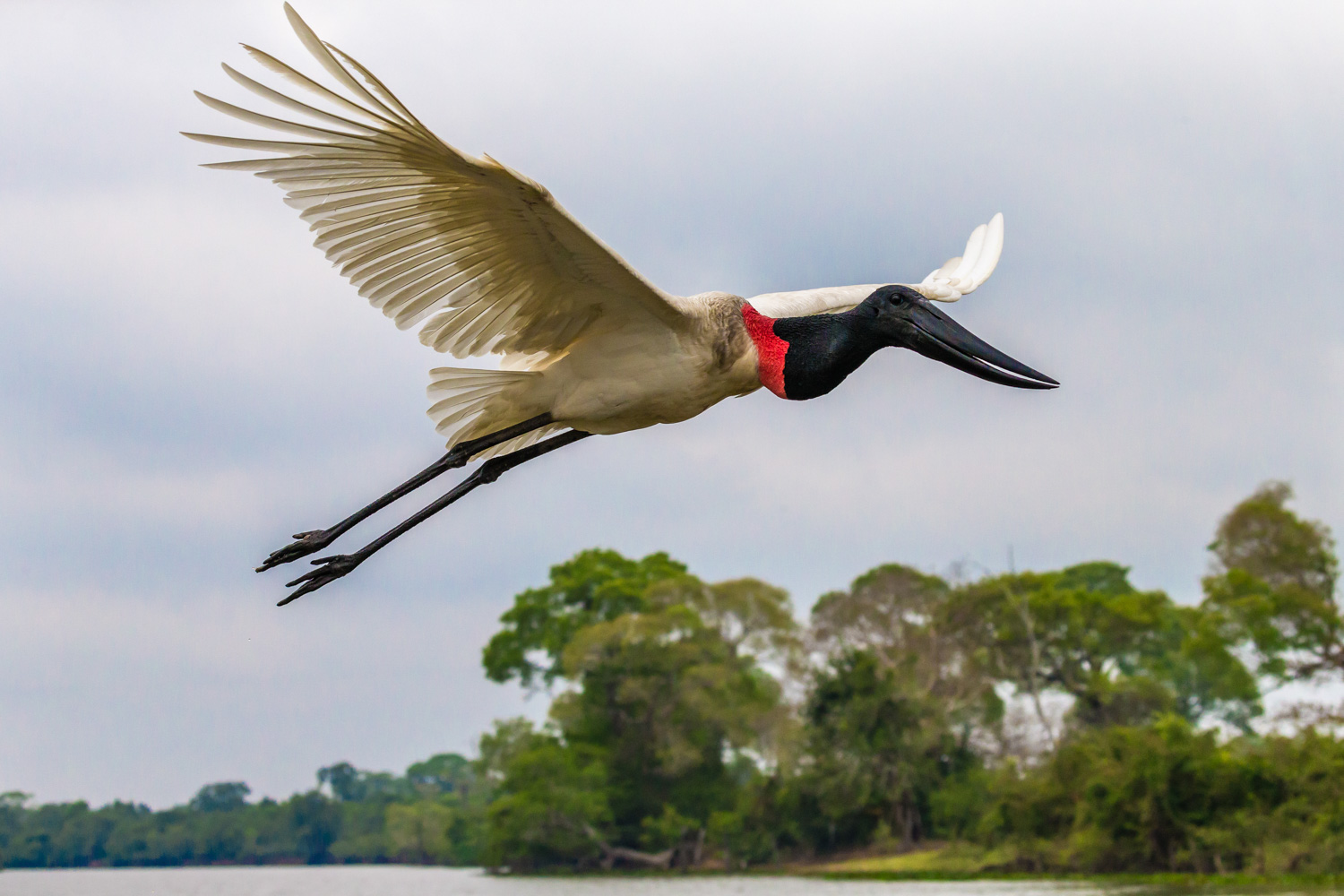
Compelling Reasons To Travel With Us
With amazing accessibility to jaguars and a host of other wildlife, Brazil’s Pantanal has enthusiastically been added to many nature photographers’ “must do” lists. In recent years, numerous new trips have cropped up offering photographers the chance to photograph in Pantanal. What sets our Jaguars & Wildlife of Brazil’s Pantanal photo shoot apart from the rest? Plenty!
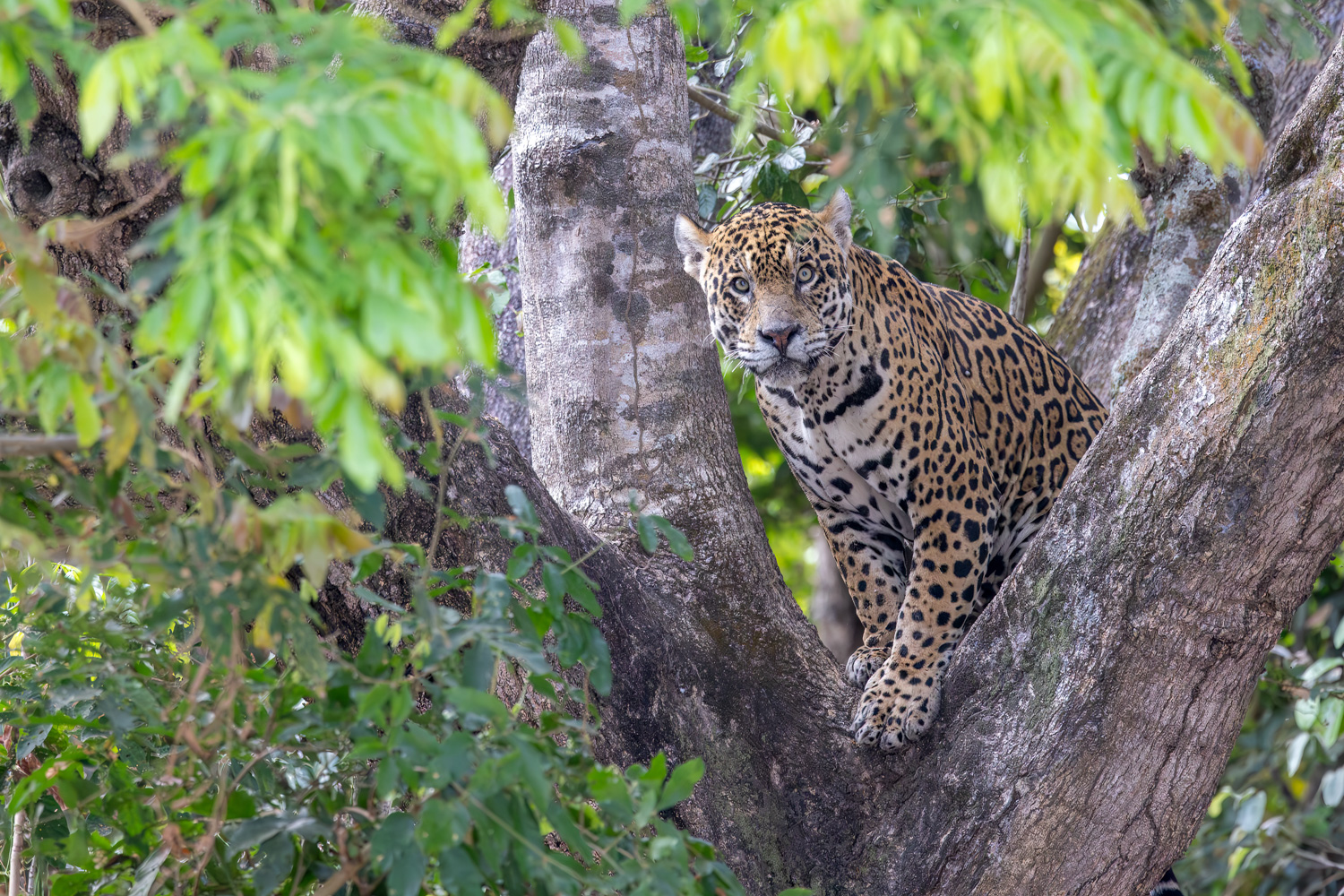
Unparalleled Experience
Joseph Van Os Photo Safaris has more than 25 years of experience offering Pantanal photography tours—far more than virtually any other photographer/tour company leading trips to the area. Our local guide has worked in the Pantanal for more than 35 years and is considered a pioneer in nature and photography tours to the region. Experience matters when you are photographing in an area as vast as Brazil’s Pantanal. We waste no time getting you exactly where you need to be for the very best photography—each and every day of your trip.

Smaller Group Size
We limit our groups to 8 participants with 2 leaders—far fewer participants than other groups which typically take 12–15 photographers, plus the leaders. With fewer participants we are able to move more nimbly and with less impact on both wildlife and habitat. Fewer people photographing is almost always desirable, but especially so when traveling in small boats, as we do when photographing jaguars.
Jaguars—And A Whole Lot More
With us you get 5 full days of jaguar photography plus additional days at two ecolodges. Because these lodges are in distinctly different habitats, you photograph a much wider diversity of the many species found in the Pantanal.
Accommodations Matter (A Lot!)
When we’re out in the field shooting we “play hard” getting the most out of available light and photographic opportunities. When we’re not shooting, we want to retreat to accommodations that offer comfort and a chance to rejuvenate for the coming day. Our chosen accommodations do just that!
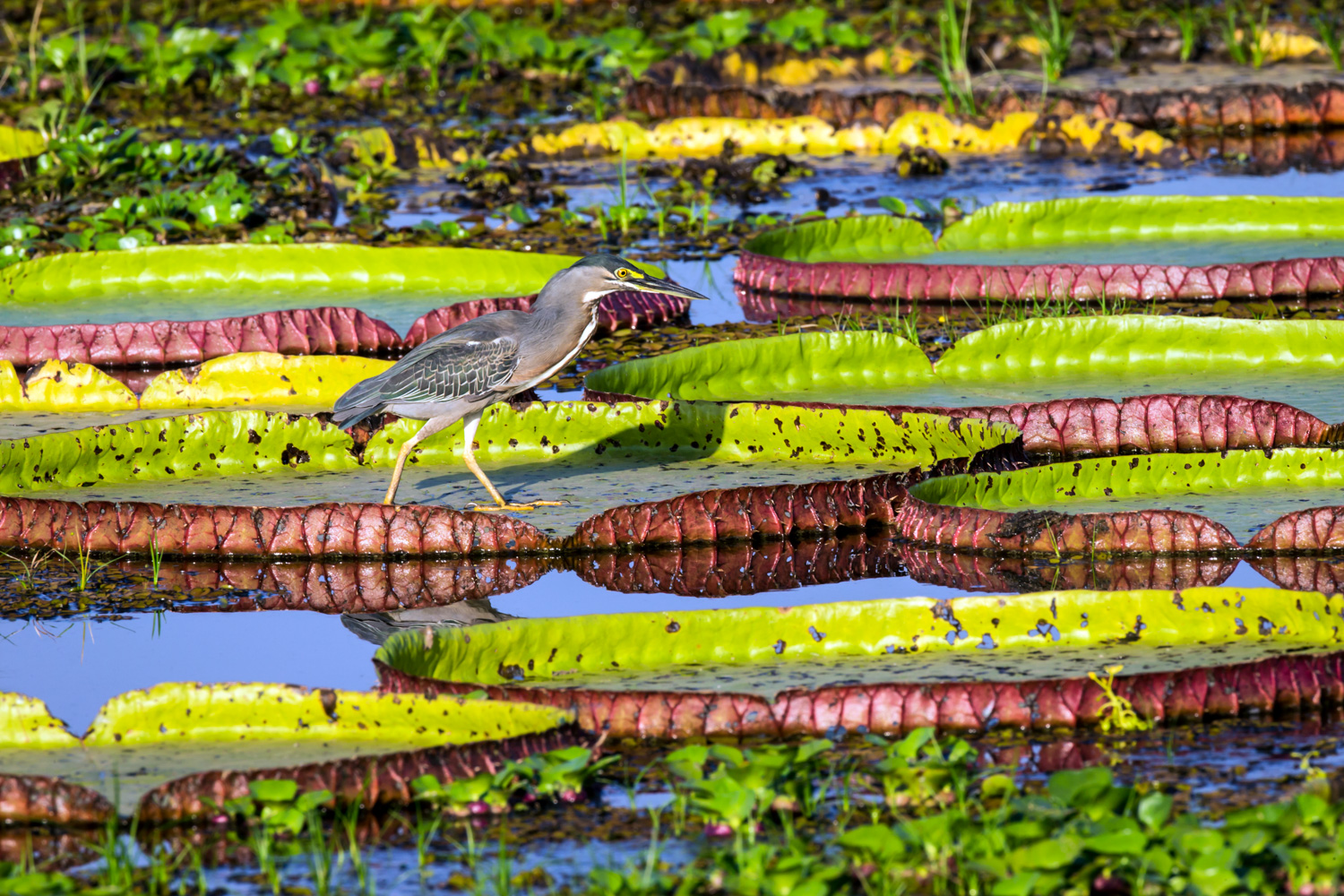
While photographing jaguars we stay in a wonderful hotel complex on the bank of the Cuiabá River, in the very heart of jaguar country. The bedrooms, in spacious duplex cottages, are quiet and comfortable. The food is outstanding. There is a refreshing pool, and the expansive manicured grounds allow plenty of acreage for walking or jogging, if desired. During lunch breaks there are opportunities to photograph resident (and tame) hyacinth macaws, as well as toucans, parrots and numerous waterbirds. Adjacent to the hotel is a spectacular and photogenic flotilla of Victoria amazonica water lilies—with the world’s largest lily pads—on an oxbow lagoon that is accessible only from the hotel. Jaguars occasionally hunt capybara along the shore of this lagoon and, staying in prime jaguar territory, we often photograph our first jaguar of the day within 15 to 30 minutes, by boat, from our hotel!
Compare our lodging to the four “floating hotels” where most photography groups stay. Rooms on these “flotels“—originally built for use by local sport fishermen with little need for space, comfort and amenities—typically measure about 10×10 feet (some are smaller) and pack the shower, toilet and twin beds all into a space about the size of a walk-in closet. Add two photographers to each room and guests are “up to their necks” in luggage and photo gear. Generators thrum throughout the night and the walls are thin enough to hear snoring in adjacent rooms. Deck space is very limited and there is little room to walk around—and nothing to photograph while on board. Once aboard these flotels, you rarely touch land for the duration of your stay. We have never had a trip member say they wished they had stayed on one of these boats instead of our hotel!
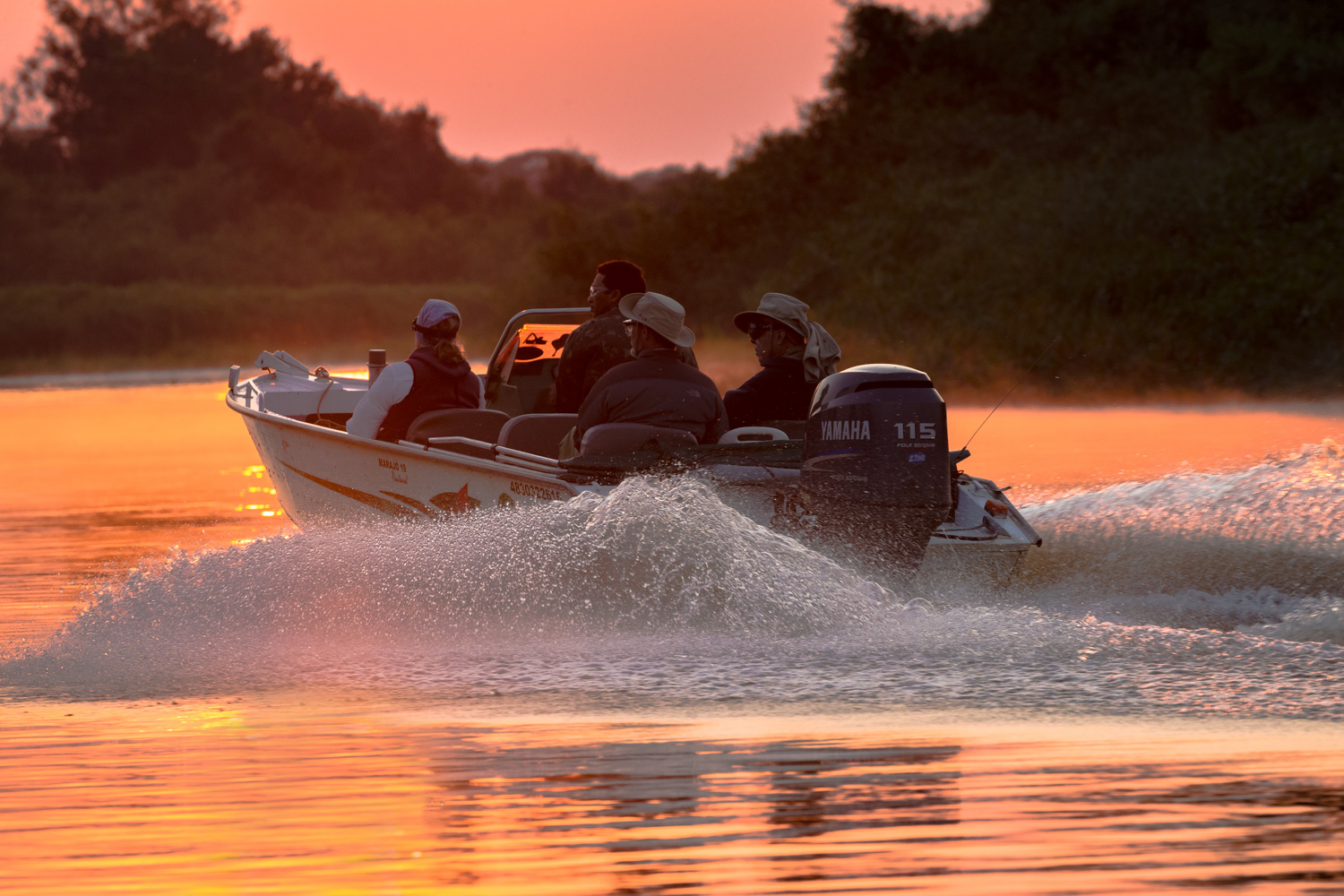
Better Boats, Fewer Passengers
We use small, nimble speedboats to get us to the jaguar action quickly. Their size allows us to get deep into narrow photogenic backwaters—prime jaguar habitat that larger boats carrying 6–8 photographers can’t access. Best of all, we limit our boats to just 3 photographers in each, so you have ample space for gear and room to get great shots. Some tour groups may put as many as 20 people into a long cramped boat! Each of our boats has a retracting sun shade (not a luxury, but a necessity!) for those times when we are anchored mid-river during a long jaguar photo encounter. Our boatmen are incredible jaguar spotters—they have a “sixth sense” for finding these cryptically camouflaged big cats along the river. Because our hotel has more “jaguar boats,” combined with numerous sports fishing boats, we have the largest and most efficient radio-linked network of jaguar spotters on the river.
Air-conditioned Vans
Finally, while traveling over the dusty Transpantaneira Highway from lodge to lodge we use comfortable air-conditioned buses. Compare our vehicles to the open, hot, military-style trucks used by many tours—whose passengers need bandanas and masks to cover their faces against the thick dust kicked up by cars and passing cattle trucks.
When you consider all the essential details that we’ve combined to make your trip comfortable, safe and very photographically productive—we know you’ll choose our Jaguars & Wildlife of Brazil’s Pantanal!
